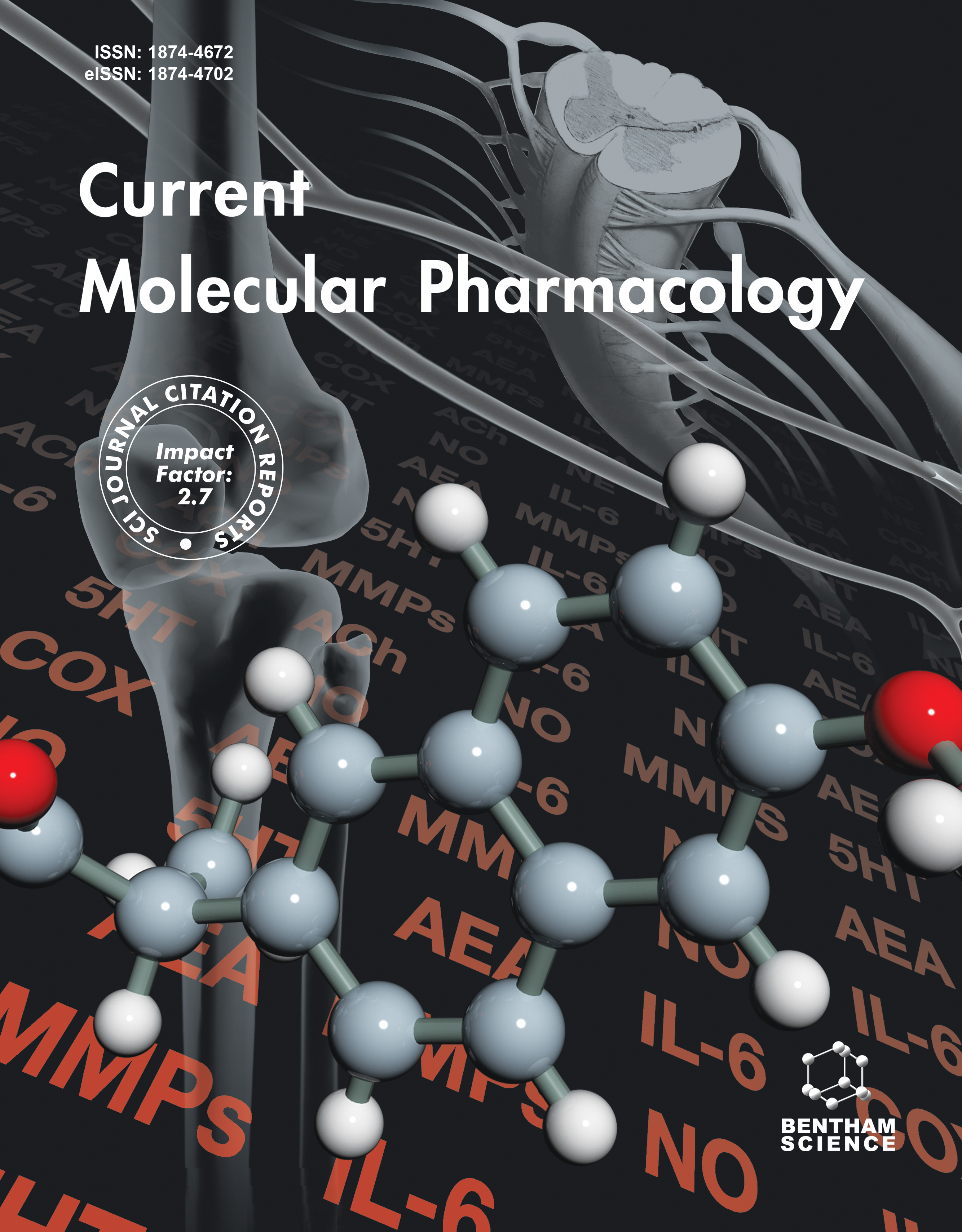- Home
- A-Z Publications
- Current Molecular Pharmacology
- Previous Issues
- Volume 5, Issue 1, 2012
Current Molecular Pharmacology - Volume 5, Issue 1, 2012
Volume 5, Issue 1, 2012
-
-
Editorial [Hot Topic: Evolving Drug Targets in DNA Base Excision Repair for Cancer Therapy (Guest Editor: Srinivasan Madhusudan)]
More LessThe overall prognosis for advanced cancer remains poor. Although chemotherapy, radiotherapy and targeted agents have significantly improved patient outcomes, treatment related toxicity and the emergence of resistance negatively impact on survival. The therapeutic efficacy of many chemotherapeutic agents and ionising radiation is determined by their ability to induce DNA damage in cells. However, the DNA repair c Read More
-
-
-
Overview of Base Excision Repair Biochemistry
More LessAuthors: Yun-Jeong Kim and David M. Wilson IIIBase excision repair (BER) is an evolutionarily conserved pathway, which could be considered the “workhorse” repair mechanism of the cell. In particular, BER corrects most forms of spontaneous hydrolytic decay products in DNA, as well as everyday oxidative and alkylative modifications to bases or the sugar phosphate backbone. The repair response involves five key enzymatic steps that aim to remove the initial DNA lesion Read More
-
-
-
Small-Molecule Inhibitors of APE1 DNA Repair Function: An Overview
More LessAuthors: Rasha I. Al-Safi, Srinivas Odde, Yumna Shabaik and Nouri NeamatiAPE1 is a multifaceted protein that orchestrates multiple activities in the cell, one of which is the preservation of genomic integrity; a vital process that takes place in the context of the base excision repair (BER) pathway. Studies have implicated APE1 in rendering cancerous cells less vulnerable to the effects of DNA-damaging agents that are commonly used for the treatment of cancer. Furthermore, suppression of APE1 expressi Read More
-
-
-
APE1/Ref-1Role in Redox Signaling: Translational Applications of Targeting the Redox Function of the DNA Repair/Redox Protein APE1/Ref-1
More LessAuthors: Mark R. Kelley, Millie M. Georgiadis and Melissa L. FishelThe heterogeneity of most cancers diminishes the treatment effectiveness of many cancer-killing regimens. Thus, treatments that hold the most promise are ones that block multiple signaling pathways essential to cancer survival. One of the most promising proteins in that regard is APE1, whose reduction-oxidation activity influences multiple cancer survival mechanisms, including growth, proliferation, metastasis, angiogen Read More
-
-
-
Biological Relevance of DNA Polymerase Beta and Translesion Synthesis Polymerases to Cancer and its Treatment
More LessAuthors: Nils H. Nicolay, Thomas Helleday and Ricky A. SharmaThe cellular genome is constantly subject to DNA damage caused by endogenous factors or exogenously by damaging agents such as ionizing radiation or various anticancer agents. The base excision repair (BER) enzyme, DNA polymerase β, and the polymerases involved in translesion synthesis (TLS) have been shown to contribute to cellular tolerance and repair of DNA lesions by anticancer treatments, particularly the Read More
-
-
-
Targeting DNA Polymerase ß for Therapeutic Intervention
More LessAuthors: Eva M. Goellner, David Svilar, Karen H. Almeida and Robert W. SobolDNA damage plays a causal role in numerous disease processes. Hence, it is suggested that DNA repair proteins, which maintain the integrity of the nuclear and mitochondrial genomes, play a critical role in reducing the onset of multiple diseases, including cancer, diabetes and neurodegeneration. As the primary DNA polymerase involved in base excision repair, DNA polymerase ß (Polß) has been implicated in m Read More
-
-
-
Base Excision Repair, the Redox Environment and Therapeutic Implications
More LessAuthors: S. J. Storr, C. M. Woolston and S. G. MartinControl of redox homeostasis is crucial for a number of cellular processes with deregulation leading to a number of serious consequences including oxidative damage such induction of DNA base lesions. The DNA lesions caused by oxidative damage are principally repaired by the base excision repair (BER) pathway. Pharmacological inhibition of BER is becoming an increasingly active area of research with the emergence of PAR Read More
-
-
-
Temozolomide: Mechanisms of Action, Repair and Resistance
More LessAuthors: Jihong Zhang, Malcolm F.G. Stevens and Tracey D. BradshawGlioblastoma multiforme is the most common aggressive adult primary tumour of the central nervous system. Treatment includes surgery, radiotherapy and adjuvant temozolomide (TMZ) chemotherapy. TMZ is an alkylating agent prodrug, delivering a methyl group to purine bases of DNA (O6-guanine; N7-guanine and N3-adenine). The primary cytotoxic lesion, O6-methylguanine (O6-MeG) can be removed by methylg Read More
-
-
-
Base Excision Repair Factors are Promising Prognostic and Predictive Markers in Cancer
More LessAuthors: Lucy Gossage, Christina Perry, Rachel Abbotts and Srinivasan MadhusudanThe cytotoxicity of both chemotherapy and radiotherapy is to a large extent directly related to their ability to induce DNA damage. The ability of cancer cells to recognise and repair this damage contributes to therapeutic resistance. Sub-optimal DNA repair in normal tissue may impair normal tissue tolerance. Inter-individual differences in DNA repair pathways may also influence the natural history and progression of cancer an Read More
-
Most Read This Month
Article
content/journals/cmp
Journal
10
5
false
en


